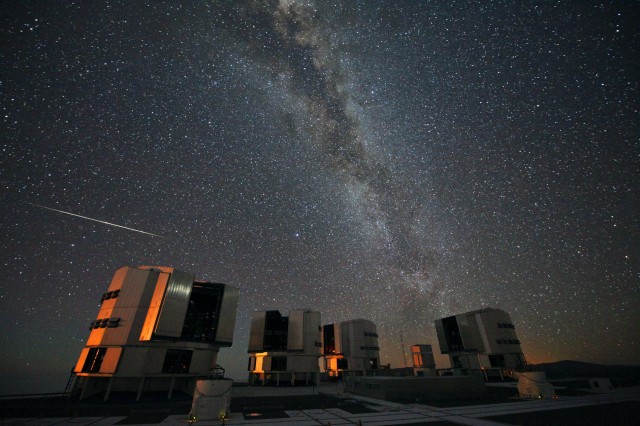The Perseid meteor shower arrives on the 13th of August – this Thursday. So, let’s celebrate with some music and sound.
First, a quick refresher: what is a meteor shower? It’s what happens when the Earth passes through the debris trail left by a comet. (Ah ha! See, just now you were sitting at your desk, and may have forgotten that you’re traveling at hyper-fast speeds on a rock hurtling through the vastness of the cosmos. Oh, yes.) We hit the Perseids every August, but this year is special in that you’ll only have to contend with urban light pollution – not the moon.
CDM readers in Asia, you may get the best show due to an expected peak in the middle of your Wednesday night, but all of us around the world with clear skies ought to be able to see something Wednesday night (or Tuesday or Thursday, even).
Slate has a great write-up that’s both a viewing guide and a set of answers to frequently asked questions:
How to Watch This Week’s Perseid Meteor Shower [Slate Bad Astronomy]
Part of what I love about electronic music and music technology is that it can embrace futurism, a sense of curiosity about our cosmos, and even can literally engage the processes of observation in astronomy. And that in turn means science can inspire song.
The lovely Polish producer dot dot, aka Artur Sleziak, shares this dubby ambient work by way of marking the occasion.
The free downloads follow a series of these spaced-out, dubbed-out creations. There’s one for the supermoon:
And the Aurora Borealis gets a jaunty number:
If you don’t know his music, well worth checking Artur out. Don’t miss, in particular, his EP Wired from last year – really gorgeous stuff.
The meteor shower itself does make sound, as noted in the Slate article. We can hear what that “sounds” like thanks to the European Space Agency. And if you want to use this into your own music, you can; it’s licensed Creative Commons ShareAlike. This is a recording of the November Leonids, not the Perseids – that’s the mess left behind by Comet Tempel-Tuttle, not to be confused with the Leonids’ Swift–Tuttle. But it’s the same basic idea.
You can’t “hear” the results in the sense of the range of human hearing, but it does produce electromagnetic energy. That is, much as you can listen to the radio, you can listen to these radio signals if sonified as here in the human frequency range:
Tracks left behind by the November 2000 Leonids shower, as detected by ESA scientists.
Each time a meteor crosses the atmosphere, it leaves behind a short trail of ionised particles. This trail reflects high-frequency radio signals from stations around the world for just a few seconds. The motion of the meteor trail due to the upper atmosphere winds changes the frequency of the reflected signal (Doppler effect). You ‘hear’ the trail as it is blown around by the winds before it is eventually dispersed.
Finally, just because it’s fun to watch a stop motion-animated figure of William Shatner floating in the cosmos, there’s this video, also out this week:
Stephen Poon produced the song; the video is the work of Team Shatner – part of a complicated-to-explain global do-gooder scavenger hunt / challenge called GISHWHES – and yes, that’s Shatner as in Bill. Never went to space in reality, did truly inspire people who did work on the space program and travel into space through the magic of television. A recent Vanity Fair interview with the man who was Kirk makes it all clear.
Now, I dare you to get the “Adventures of Space” song out of your head.
Maybe listen to those Leonids again.
Since we wanted a visual aid to all this sound, at top is a rather amazing photo:
In order not to miss any meteors in the display, ESO Photo Ambassador Stéphane Guisard set up 3 cameras to take continuous time-lapse pictures on the platform of the Very Large Telescope during the nights of 12–13 and 13–14 August 2010. This handpicked photograph, from the night of 13–14 August, was one of Guisard’s 8000 individual exposures and shows one of the brightest meteors captured. The scene is lit by the reddened light of the setting Moon outside the left of the frame.
More information: www.eso.org/public/images/potw1033a/
Credit: ESO/S. Guisard (www.eso.org/~sguisard)

